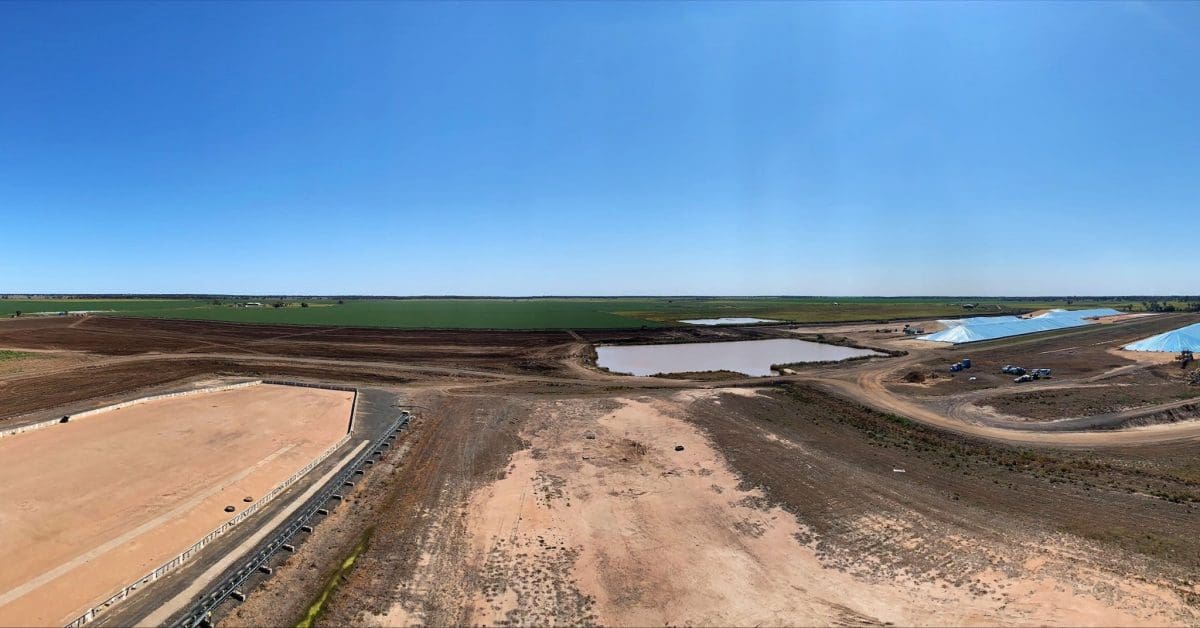
Extra bunkers are being prepared at Coonamble in NSW to cater for the upcoming harvest. Photo: GrainCorp
PRICES for wheat and barley have taken a tumble in the past week to reflect a surge in grower and trade selling and a downtrend in Northern Hemisphere cereal values.
On the weather front, handy rain in much of New South Wales and Victoria appears to have offset dry conditions in southern Queensland, and a frost event of unknown severity in Western Australia.
In international news, Egypt’s GASC bought 300,000 tonnes in total of Ukrainian and Russian wheat for October 25-November 3 shipment at prices above its previous purchase.
Australian exporters are believed to be selling new-crop wheat cargoes, mostly into South-East Asia, as Australia’s basis continues to be low, and pent-up demand from MENA customers comes to the fore to support Black Sea and European pricing.
ABARES increased its estimates for Australia’s winter crops including wheat and barley in its Australian Crop Report September released on Tuesday.
ABARES’ confirmation of a big crop getting bigger added to the bearish tone.
| Nearby | New-crop | |
| Barley Downs | $292 down $10 | $297 down $3 Jan |
| Wheat Downs | $345 down $20 | $335 down $7 Jan |
| Sorghum Downs | $302 steady | $285 down $5 Mar-Apr |
| Barley Melbourne | $290 down $2 | $295 down $5 |
| Wheat Melbourne | $360 down $12 | $355 down $13 |
Table 1: Indicative delivered prices in Australian dollars per tonne.
Northern sellers active
In the week to 9am today, rainfall in the northern region was patchy, and included a much-needed 10-20 millimetres over parts of the north-west and central plains, and 20-30mm over the central to southern slopes in NSW.
It has prompted some trade and grower selling of new-crop, and pushed out some leftover grain in the current-crop window as the inverse collapses.
“Major feedlots are fully covered for October, and you’d struggle to get a bid there now,” one domestic trade source said.
“I’d say November-December would be 50-per-cent covered now, and that market’s certainly softened over the past couple of weeks.”
“There’s not much liquidity in November-December.”
At Gunnedah, Quest Commodities principal Jayne Barker said some new-crop barley was trading on the north-west plains.
“There’s not much old-crop left,” Ms Barker said.
A wet and late planting of winter crop on the Liverpool Plains means it will harvest a reduced area of wheat and barley, and at least a fortnight later than normal.
“There’s still buying interest for local consumers, and a bit of wheat still to fill in for October.
“Wheat’s hard to find.”
Volume shipping of wheat out of Brisbane and Newcastle continues, and rail is helping to empty the bunkers in north-central NSW.
More are being put down in readiness for this harvest, and in GrainCorp’s case, that includes a total of 480,000t combined at Coonamble and Gilgandra alone.
Trucks are busy supplying consumers, and taking grain from on-farm storages on the Liverpool Plains to port.
“For September, there’s a focus on the port, and it’s really hard to get any trucks out of Wee Waa and Narrabri north.”
Grain Central understands plenty of new-crop slots have been booked out of Newcastle, where Qube has this week been announced as the new owner of one of its two terminals.
AgVantage principal Steve Dalton at Narrabri said a $350/t track market for new-crop wheat into Newcastle equates to roughly $300/t up country, a price high enough to see supply outweigh demand.
“Wheat’s come under a bit of pressure in the past week,” Mr Dalton said.
“If prices made it back up, that would entice more sellers.”
Poultry consumers are buying small amounts of sorghum, and discounted grades when they can get them, as the container market keeps putting its hand up for top-grade grain.
Mixed in south
In the southern region, parts of the Victorian Mallee, Western Districts and Wimmera got 10-30mm in the past week.
South Australia’s growing regions generally got single-digit falls with some exceptions including Pinnaroo with 23mm.
It means the southern region production prospects are much more varied than the north, as its sandy soils require more rain to underpin yields now that daytime temperatures are climbing.
“We’ve fared a lot better than SA did with the rain on Friday,” Riordan Grains general manager Mark Lewis said.
New-crop Australian wheat is in stronger demand than barley, a fact Mr Lewis said local buyers were well aware of.
“Domestic consumers are switching into barley.”
Mr Lewis said growers in southern NSW and the Wimmera had done some forward selling as their confidence in the season grew.
“We have seen the farmer starting to come to the party a bit…but it’s still quiet in the Mallee.
“I think the grower’s very undersold.”
However, Mr Lewis said this was nothing unusual.
“Normally in September they start to come to the market if they feel confident in the season.”
